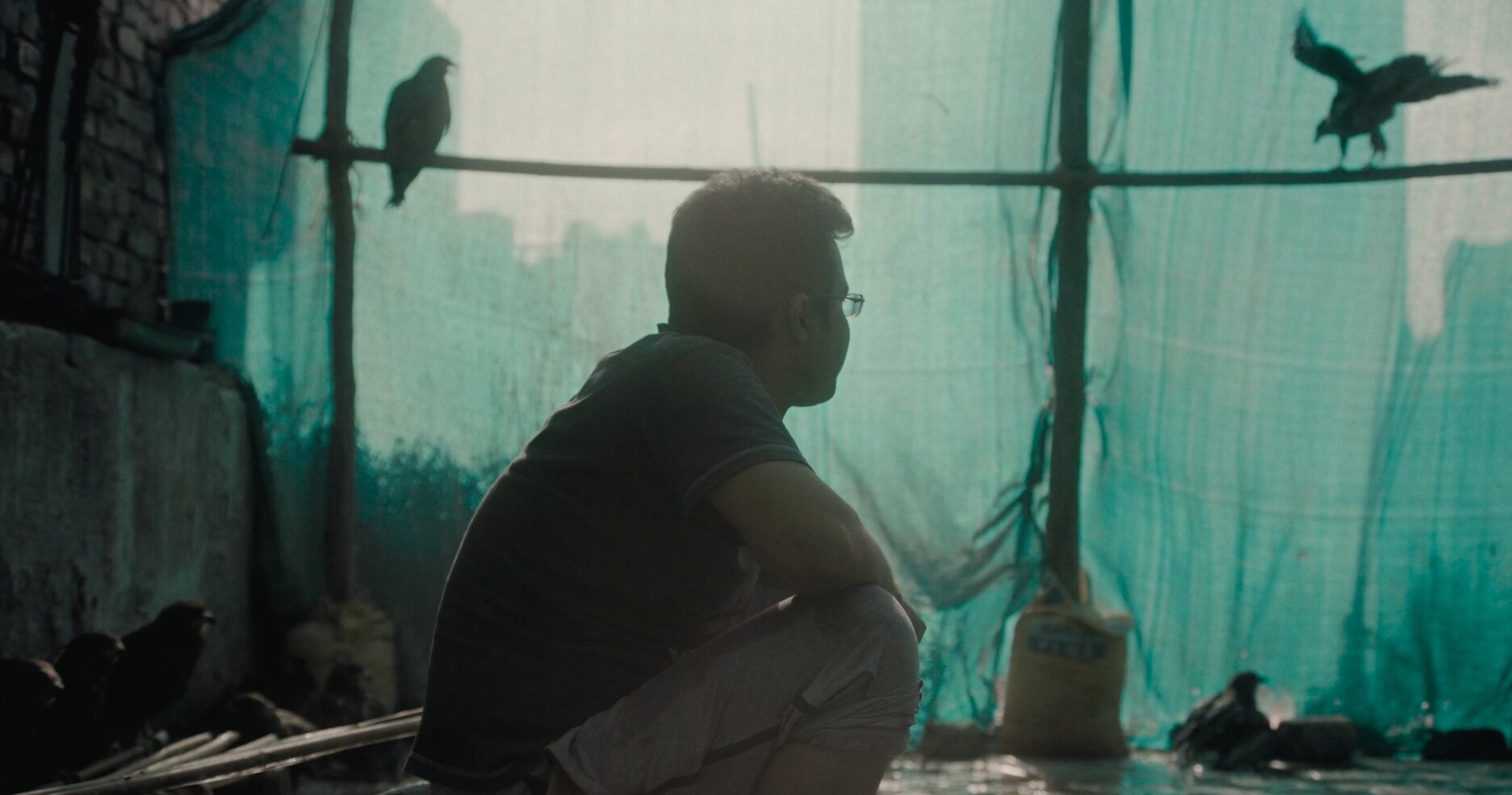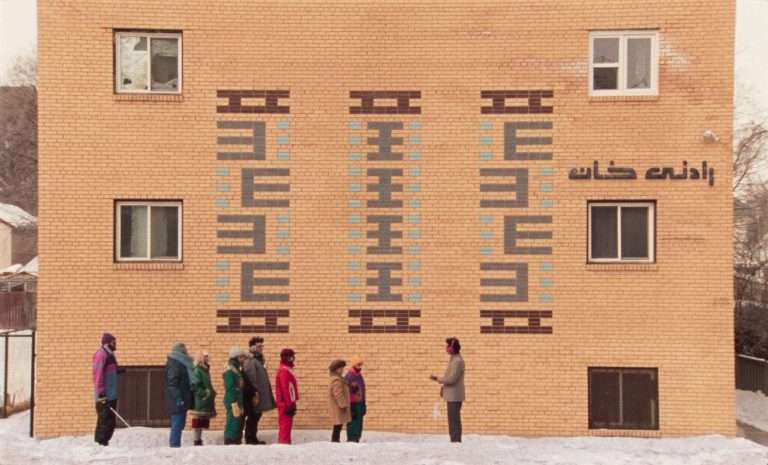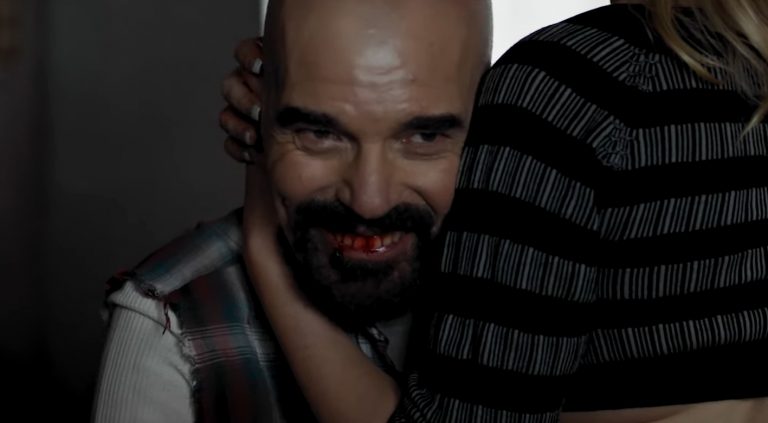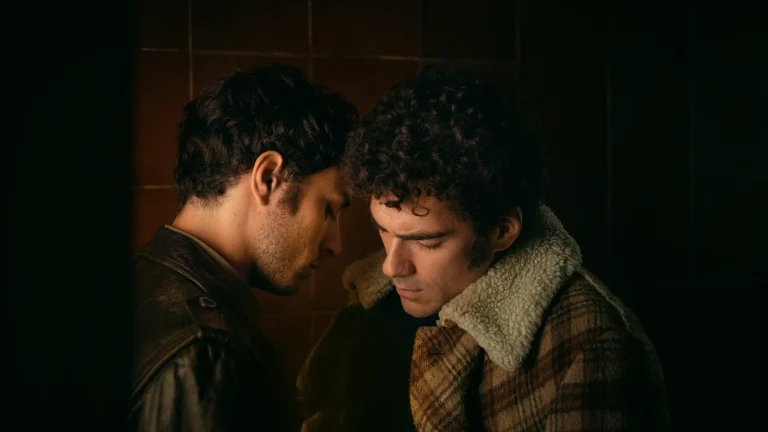As the credits roll at the end of All That Breathes, one notices a paradox that any profound work of a non-fiction artist should have placed emphasis on capturing what must always remain hidden from the eye: time, faith, and atmosphere. This Oscar-nominated documentary sets itself amidst the preoccupation of the opaque, palpable Delhi air. The picture postcard of Delhi is the familiar image of a dystopian, grey tint laminating the city while kites that appear to be tiny black dots float through the bleak expanse.
All that Breathes deals with the abstract triangulation of human, bird, and air through the effectively combative story of two Muslim brothers, Saud and Nadeem, who rescue and nurse wounded kites along with their Cousin/assistant Salik in a locality of Delhi.
The brothers do this noble work from a grubby, crammed, and industrial-looking basement, where they later set up an avian hospital. The basement is cinematic but has a directly oxymoronic presence, with the birds fluttering in and out of it to the endless horizon. By localizing and then subtly de-synchronizing the image, director Shaunak Sen explodes the determinacy of space, revealing that which lies off-screen and beyond the gaze. The salient bipolarity of both the decayed spaces creates a cinematic paradox on screen that Shaunak Sen sought to resolve with his aesthetic of renunciation- images that forsook the mise-en-scene of a dense Tarkovsky cinema.
All that Breathes (2022) Documentary Explained:
Setting up the visual grammar:
The documentary lacks the ambition to be a wildlife or environmental feature for its own benefit, and it has little in common with that genre of non-fiction filmmaking in general. . The documentary is a gradual roll-out of a radically empathetic story of a few do-gooders who are at odds with their obsessive passion for saving such majestic creatures. The challenges that come with co-inhabiting with raptors are that they are a violent species, unlike companionate ones like Dogs, cats, or elephants.
Kites are deliciously disobedient to the man’s design- to cite an example from the film, a Kite snatches Salik’s specs and flies away. To shoot with such free-wheeling creatures, the directorial team surely needed a lot of patience, and it shows in the film’s pensive, contemplative tone. Time becomes palpable when it coincides with space, as we view the creative choice to shoot the film with long takes and pans.
Shaunak moves away from the anxious handheld shots that his previous feature, Cities of Sleep, was filled with and adapted the slow tracking style coupled with almost a meditative and motivated panning technique which gives a viewing experience akin to a feverish dream as the film slips from the viewer’s grasp even as it satisfies the desire for more, averting the fear of the end even as it moves, inexorably, towards a cut.
The film’s visual grammar consists of languid and languorous pans and shift focuses. In one scene, we see a turtle slowly walking its way up from a garbage dump as a vehicle passes by on the road. In another scene, we see a reflection of an airplane on a puddle next to which a centipede is going about its business. The horizontal pan and slow tilt-down technique are essential aestheticisms that never burden the free-flowing narratives and compel the audiences to be patient and persevere through the occasional halts designed in the film’s visual grammar, i.e., in another scene, the focus stays for minutes on a few pigs eating from the sewer. The aesthetic of spontaneity provides the film with its sophisticated vocabulary to connect with the audience.
The story of this singular, remarkable work by the brothers becomes a crucial axis in the sensorial and philosophical exploring the human and non-human kinship. The story of the brothers is an intriguing conceptual pre-disposition to climate change as we see the number of birds falling from the sky due to the polluted sky of Delhi rising daily.
In a way, the brothers have a front-row seat to the ensuing apocalypse, but there’s hardly any gloom and doom in their way of functioning. The slow-burn, sublime mood of the film comes from the poetic and almost prophetic voiceover without resorting to the mawkish sentimentality that is often associated with climate change narratives. Shaunak veers away from the reportorial use of statistics and a verite style of visualizing macro issues on screen.
The disembodied voice of the brothers tells their story and ideas with unsentimental, stoic, and almost wry resilience. No wonder, Shaunak finds appropriate images from his 300 hours of the repository to juxtapose with the endlessly quotable narration of the brothers.
Technical Aspects:
The editing style strikes you as more cerebral than emotional, vacillating between extreme compression and decompression; the dank basement and the vast sky feels like nature breathing its course. The murmurs of the crammed basement add to the sense of proximity, while the long shots and sounds of the growling wind provide the much-needed ecological, social, and emotional cadence to the film.
The cinematography by Ben Berhard, Riju Das, and Saumyananda Sahi is reminiscent of Werner Herzog’s documentaries like Grizzly Man and The White Diamond, where the conflict between the sublimity of nature against the corrupted mankind is at bold display.
Thematically, this documentary explores themes explored in other works, such as Honeyland and The Truffle Hunters, highlighting the unvarnished relationship that humans can have with a species that most people don’t care about. The Dickensian voiceover chameleons to Darwinism as it addressed the ways in which many species, just like the urban kites, have evolved and improvised to suit and rehabilitate to the conditions of the Anthropocene and how humans take no measure in saving the kites while being ignorant to the fact that the kites play a gigantic role in banishing the garbage dump of the city.
Political undertones:
Though the film is not confrontationally political but rather cosmologically political, the hypnotic trans-species images are interrupted by subtly political sonic leakages.
All that Breathes was filmed during the rising Islamophobic climate bolstered by the impending introduction of the Citizenship Amendment Act. The directorial unit makes people aware that the streets of Delhi are on boil and lets the macro world outside seep into the film through sounds of protests, news reports on television, etc.
There is a conversation filmed at a dinner table, where the Muslim family discusses the possible harassment and arbitrary agony they might have to encounter due to the government’s majoritarian Hindutva incline. We see Salik receiving a frantic call from his mother, to whom he assures he is untouched by the riots happening in the streets as he is coming back from an expedition to save a set of raptors.
While sitting in the Rickshaw, Salik watches a video of the unrest being caused kilometers away from his residence and moments later brings out a tiny squirrel from his pocket. As Salik tenderly caresses the creature, we learn how the brothers chose radical empathy in the face of an increasingly violent and doomed world in which their existence as a religious minority in this country is as threatened as the endangered kites they care for.
The apparent proliferation of the injured kites requires the brothers to get funding to set up an avian clinic. But the documentary doesn’t walk the route of showing their struggles to get eyeballs and money. The acclivitous flight of the brother’s dream and the horizontal impulse of the cohabitation with the kites take a seismic turn towards the end.
The audience knows that it is a precipitous road ahead as it is intelligible to even to the least learn that an ecological collapse is imminent. Still, the narration is not overtly optimistic and distances itself from cinematically resorting to a pedantic and moralistic tone. But surely, it leaves you with ideas and intellectuals.
There is something inherently mystical about these majestic raptors and their interchange with the humans, and also something unmistakably spiritual and pensive about the men of burden and bliss. The devotion of Saud, Salik, and Nadeem to saving them is such that the causes of the upheaval, unrest in the streets, and its aftermath do not shake or threaten their cause.
As the narrative progresses, we learn that the name of the documentary, All that Breathes, originates from their late mother’s insistence on treating every creature that breathes the holy air the same, without any hierarchical preference for any.
All that Breathes (2022) Documentary Ending, Explained:
Amidst all the turmoil around them, the brothers get the necessary funding to set up the clinic they dreamt of. The brothers discuss how they would run the clinic once Nadeem travels to the US to learn more about treating the birds. The brothers proudly watch the “Wildlife Rescue” board being put up outside their homes. Yet they show detachment to the results of their hustle as the “how does it feel now?” is left unanswered.
Must Read – 5 Reasons Why All That Breathes Will Win The Best Documentary Oscar At The 95th Academy Awards
They chat about the appalling condition out there on the streets and wonder if anyone wanting to save a kite’s life can even reach them in these violent times. Their persistence surely bears fruit with time, but this all will become redundant as the world around them doesn’t change for good, and human behavior keeps deteriorating.
The voiceover at the end reminds us the motivation to conserve the ecology is simple, “You don’t care about things because they share the same country, religion, or politics. Life itself is a kinship. We’re all a community of air. That’s why we can’t abandon the birds.” It ends with a similar note of stoic and muted resilience.
Final Thoughts:
With the survival of human civilization at stake as an environmental crisis is becoming the epochal challenge of our times, environmental documentaries confront their audiences with damage done to nature’s creatures at the level of both the microcosm and the macrocosm.
The transfixing work All that Breathes is not a typical documentary regarding climate activism. It neither becomes an alarming tale of the impending catastrophic die-off the world could get subjected to again in a post-pandemic world. It works within stifled spaces of Delhi where the invisible stuff of existence becomes palpable in its resistance to cosmological imaging.
All that Breathes jousts and jostles the impressionistic palimpsests of ecology with a deeply embedded colloquial and vernacular subcultural micro-miracle of urban life as the three Don Quixote-like figures roam around saving the free-falling behemoths of Delhi. Shaunak Sen’s All that Breathes is a frozen flame of artistry in creating a mournful and never-ending remembrance of the raptors in Delhi.







